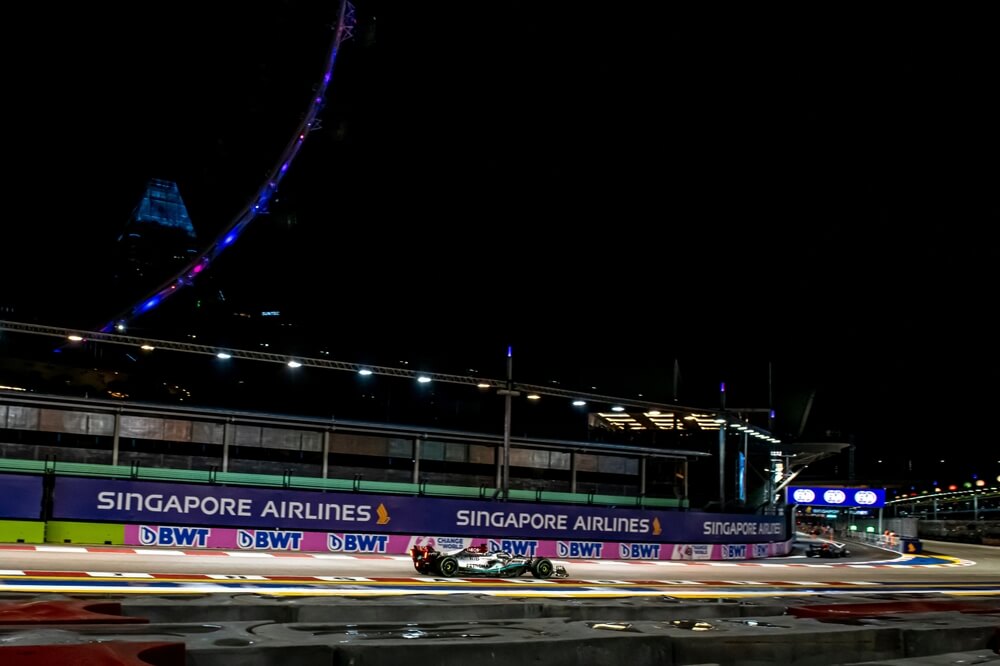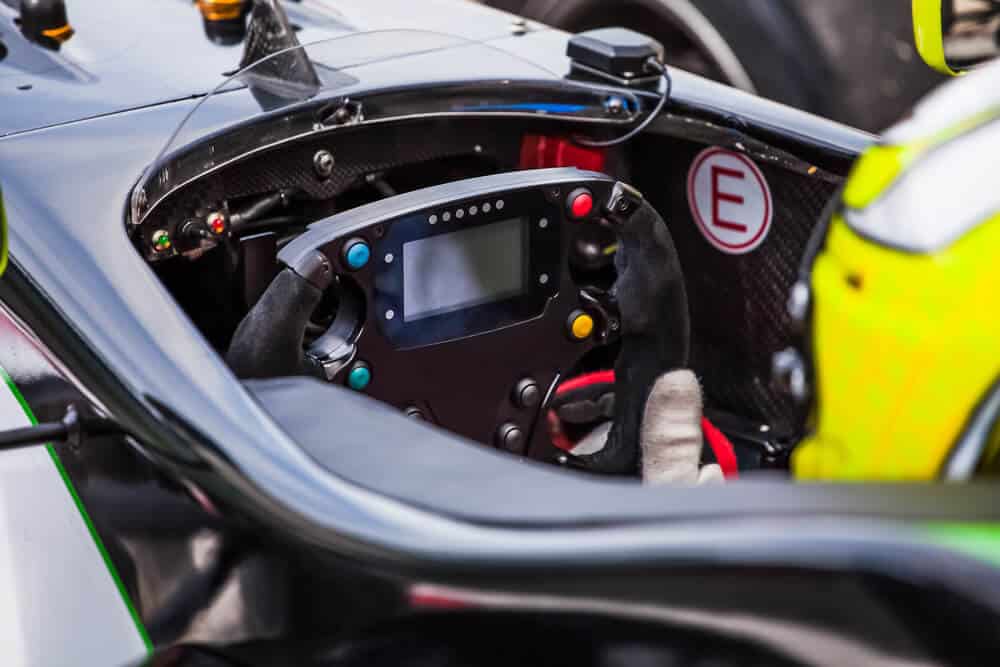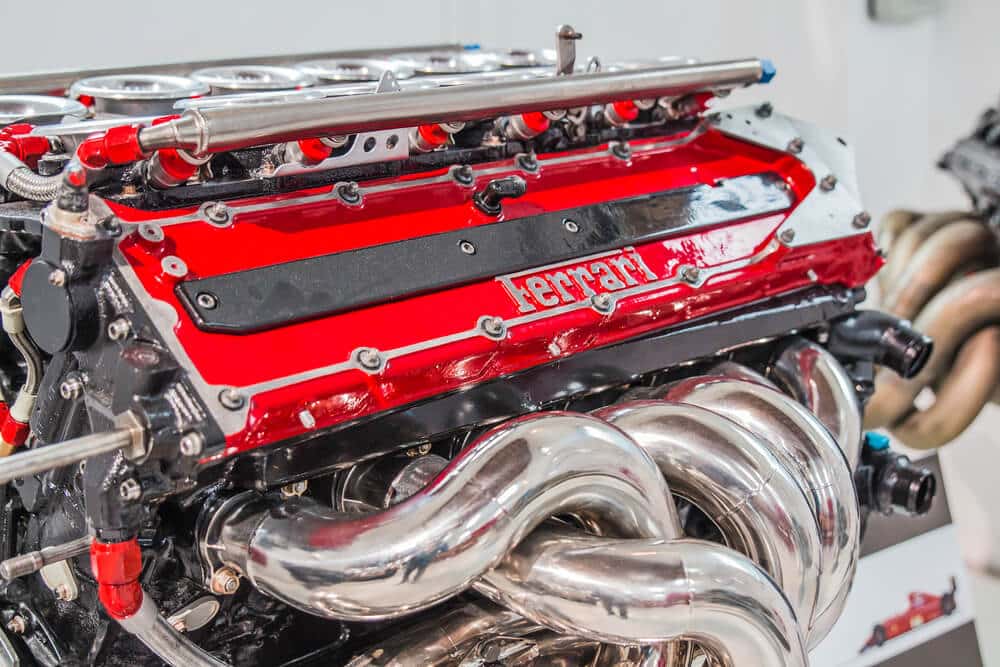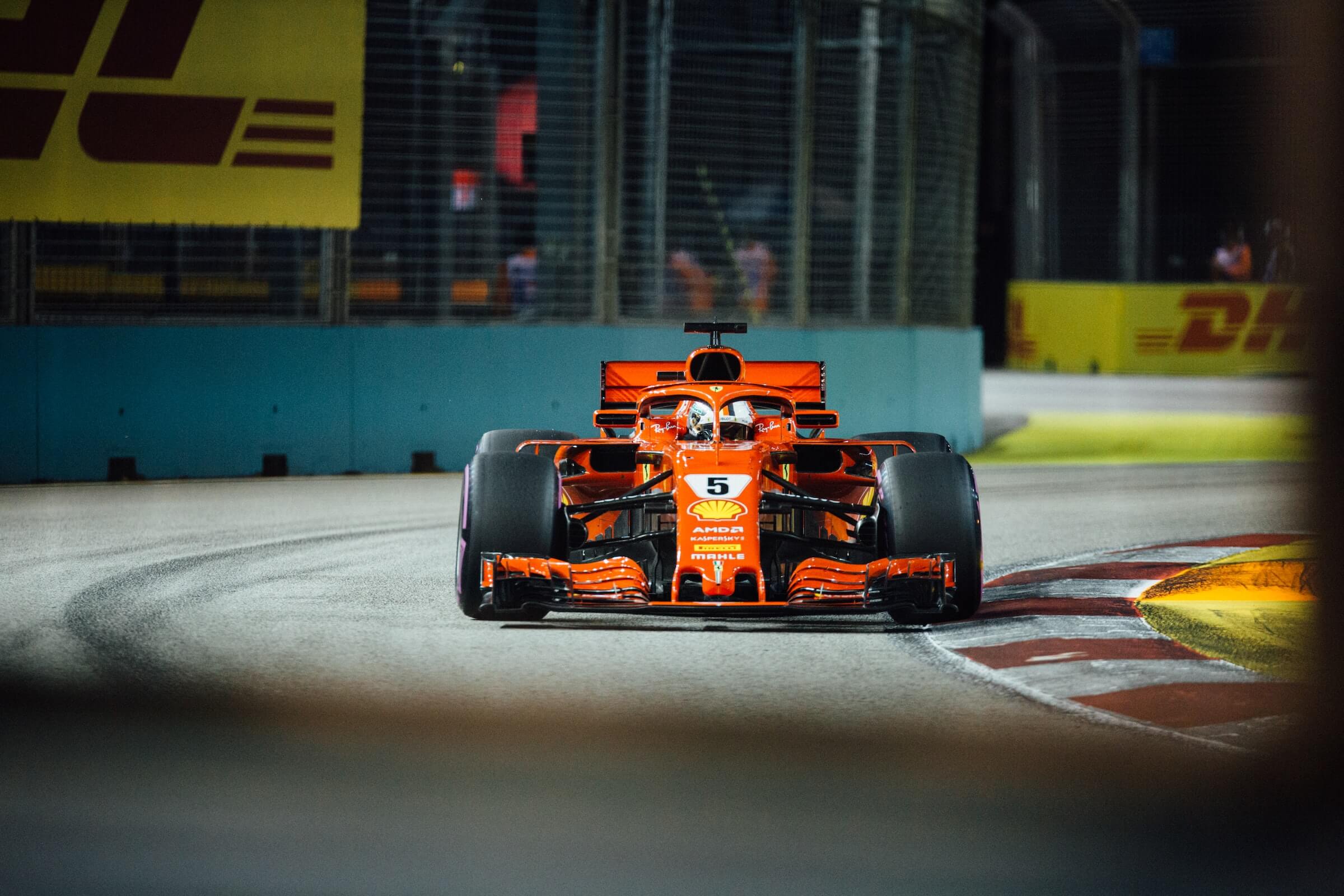Picture this: the sun dips below the horizon, and the roar of Formula 1 engines shatters the night’s silence. The racetrack becomes a dazzling sea of lights, illuminating the path for speed-hungry drivers. This electrifying spectacle is none other than a night race in the world of Formula 1. Let’s delve into the captivating world of these nocturnal contests, where technology, strategy, and atmosphere collide.
Table of Contents
Watch this video to learn why F1 cars are faster at night.
Evolution of Night Races in Formula 1
In the annals of racing history, night races stand as a testament to innovation and global spectacle.
Imagine the year 2008—the inaugural Singapore Grand Prix unfolds, marking the first night race in F1 history. A floodlit Marina Bay Street Circuit transforms Singapore’s cityscape into a high-speed theater of tire-squealing drama.
Why night races, you ask? The allure is undeniable. They beckon viewers from different time zones, redefining prime-time entertainment. These races morph into shimmering showcases of cutting-edge lighting tech, rendering darkness powerless.
Pioneering Night Races
Singapore Grand Prix: Shimmering Streets
Singapore’s debut night race was no ordinary feat. A street circuit meandering through skyscrapers and waterfront views, it’s a test of driver skill and engineering prowess. Imagine the dance between light and shadows, with 1,500 lux illuminating every twist and turn. Drivers maneuver through 23 turns, their vehicles mere centimeters from walls, enveloped in the night’s embrace.
Bahrain Grand Prix: Desert Jewel Under Stars
Then there’s Bahrain. The Bahrain International Circuit took a leap into darkness, shifting its daytime race to a nighttime spectacle. The switch brought more than just cooler temperatures—it reshaped the experience. Imagine the desert’s tranquility broken by roaring engines, under the spell of 495 light projectors casting their luminous magic.
Technological Marvels
Now, let’s peek behind the curtains of technology. LED lights, like tiny stars, brighten the tracks. Their efficiency and ability to mimic daylight astound. No glare, no shadows—just optimal visibility. And let’s not forget the sustainability angle. These lights are energy-sippers, leaving a smaller carbon footprint.
Captivating Viewer Experience
As the lights ignite, the viewer journey begins. Night races aren’t just about racing; they’re about the theater of speed. The track morphs as the temperature drops, affecting tire grip. Strategy becomes a game of anticipation—when to pit, when to push. Drivers, too, battle more than rivals; they battle their own circadian rhythms, adapting to a nocturnal rhythm.

Night Races on Iconic Tracks
Yas Marina Circuit (Abu Dhabi): Oasis of Light
Abu Dhabi’s Yas Marina Circuit is a work of art, both day and night. Twilight descends into darkness, and the circuit’s stunning architecture comes alive with 5,000 LED lights. The fusion of speed and Arabian glamour is mesmerizing, making the Abu Dhabi Grand Prix a must-watch.
Circuit of the Americas (United States): Stars, Stripes, and Speed
In Texas, the Circuit of the Americas transforms the United States Grand Prix into a night rendezvous with speed. The Circuit’s bold layout, winding through elevation changes, becomes even more spellbinding under the night sky. For American fans, it’s a potent cocktail of motorsport and patriotism.
Global Impact and Popularity
Night races aren’t just adrenaline-packed—they’re economically charged. Host cities benefit from extended tourist stays and increased viewership, transcending time zones. It’s not just about racing; it’s about making an indelible mark on the world stage.
The Future of Night Races
The night race saga is far from over. New circuits yearn for their moment under the stars. Technological leaps could herald even more dazzling displays. Imagine tracks that respond to the race, with lights that dance with the rhythm of the engines.
Frequently Asked Questions
What are night races in Formula One and when did they start gaining popularity?
Which Formula One circuits host night races?
How do night races impact the viewing experience for fans?
Conclusion
Night races are the epitome of F1’s evolution. A concoction of technology, strategy, and sheer visual splendor. From Singapore’s shimmering streets to Abu Dhabi’s desert oasis, each night race is a symphony of innovation and spectacle. So, the next time you witness F1 cars slicing through the night, remember—the darkness can’t dim the radiance of these racing luminaries.
Article sources
Learn more about Formula One
Want to learn more about F1? Then visit our Formula 1 glossary and dictionary.



